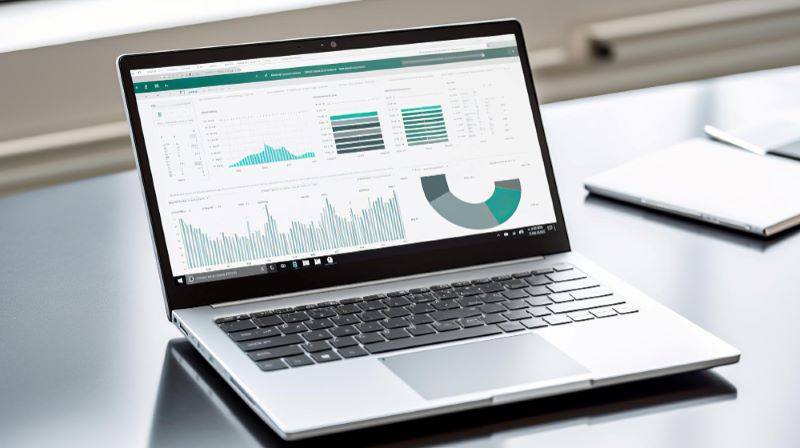The Importance Of Web Scraping In Media Monitoring
As you know, there are many different uses for data gathered via web scraping. Media monitoring is one of the most important if you want to know where your business stands in the eye of your customers. It can also help you understand your competitors. Online media monitoring lets you keep on top of how your brand is being portrayed on the internet so you can take appropriate action.
Table of Contents
The internet is an ever-expanding universe of data, so manually collecting relevant information would take you forever. That’s why web scraping is your best choice when performing your media monitoring tasks. It will minimize the risk of human error and provide you with loads of free, high-quality public information to use in your favor.
What is media monitoring and analysis? Do you want to know how to do media monitoring the right way? Keep reading. This guide will tell you all you need to know to up your media monitoring game. Feel free to use the table of contents below to jump between sections.
What Is Media Monitoring?

Media monitoring is the act of observing different topics of interest regarding your brand, clients, and competitors across numerous digital media channels. It allows you to keep an eye on what internet users are saying about you online and provides information on your competitors. Most businesses employ media monitoring services or use web scrapers to crawl data sources like:
- Social media
- Forums
- Blogs
- Competitor sites
- Search engines
- Review sites
Keeping tabs on the valuable information provided by these types of platforms is highly valuable these days. It will give your company an edge over the competition. Media monitoring allows you to maintain a good online reputation, improve your strategies, and enhance other relevant business operations.
Why Media Monitoring Is Important in Business

Online media monitoring can help you understand your brand’s areas of improvement. It’s an essential tool in business growth and development, as it can help you visualize all of the mentions of your brand, products, or services online sorted by platform and area. Analyzing the outcomes of this type of research has an unmatchable commercial value — even scientific.
Monitoring your brand on the web has numerous perks. It’ll allow you to create data-driven strategies to position your brand more efficiently by providing you with:
Customer Insight
Understanding your target audience is vital for business success. Online media monitoring provides you with data to learn more about your customer’s perception of your brand. Study this data to learn their expectations, preferences, needs, pain points, and concept of value. These insights into your client base will let you determine your strengths and weaknesses. The advantage you gain allows you to get down to work building more refined long-term strategies.
Competition monitoring
In order to grow your business, you need to monitor your competitors’ actions. Keeping an eye on them will help you understand what they’re doing and work out how you can do it better. It will also let you polish your strategies and offer unique propositions at a better price point. This approach will allow you to gain a competitive edge to stay ahead in the game.
Measure your marketing efforts
Unless you’re using paid ads, it’s hard to measure the success of your marketing efforts. Media monitoring could give you relevant information on what your audience is commenting on, liking, and sharing across many digital platforms. Collecting and analyzing data on promotions will let you replicate your formulas or tweak them until you achieve the results you want. Monitoring your content and your competitors’ will help you polish your storytelling to keep your customers coming back for more engaging content.
Monitor industry leaders and influencers
Consumer trends are highly influenced by what the most popular personalities are saying online. That’s why you need to keep track of who the online experts and opinion leaders are, as well as what they are saying. Knowing who your audience is listening to can help you improve your marketing strategies. You can reach out to these influencers so that they can advertise your brand. Furthermore, you can analyze the content they [produce on similar brands and use their most liked and shared posts as inspiration to create a winning content strategy.
Real-time responses
Media tracking can also let you be more present for your audience. By aggregating what your audience is saying into one place, you have better chances of responding in time, which can help you with crisis and online reputation management. Staying responsive can make the difference between keeping a lead and losing it. Moreover, keeping tabs on customer interactions will help you build a stronger bond with your client base.
Use Cases of Media Monitoring

As you can see, media monitoring offers a plethora of advantages. There are numerous use cases of such a robust marketing research strategy. If you need some ideas to implement into your own plan, here are some of the most common ones:
1. Social media brand monitoring
Scraping the mentions of your brand across social media platforms is a great way to monitor brand awareness. It will help you determine where you need to increase your efforts to stay in your customers’ minds.
2. Crisis management
Every brand has a bad day every once in a while, but timely action can help stop a crisis on its tracks. Brand image is more fragile than ever in the social media era, and negative PR spreads quickly. Not addressing backlash from your customers on social media, review sites, and other platforms can damage your brand’s reputation past the point of no return. A timely response can save the day and allow you to come back unharmed from negative mentions.
3. Competition research
Keep your enemies close, they say. While your competitors are not precisely your enemies, you might want to observe their moves online. Lucky for you, you can scrape valuable publicly available data from all over the web or keep your industry research as local as you want.
What Are the Best Media Monitoring Tools?

Nowadays, there are many media monitoring companies that can provide you with some very specific data. Yet, hiring a third party to conduct your research might be a costly solution. Your contractors might not offer 24/7 monitoring, and they’ll need to test out many options to find a good solution for you. However, these companies conduct their media monitoring service with tools you can implement on your own for a fraction of the price.
To improve your online marketing and branding strategies, web scraping is the best media monitoring option you have. Period. Why? Because it adapts to your particular needs and lets you gather the necessary data in a timely and effective manner. If this is your first approach to web scraping on your own, it might seem a bit intimidating, but the process can be as simple as you want it to be. These are some of the tools you’ll need:
Proxies for web scraping
Without proxies, web scraping would be a nightmare. You wouldn’t be able to send as many requests as needed to expedite your data gathering process. Proxies are a highly valuable weapon to keep your scraping exercise running smoothly. However, you cannot rely on just any proxy available online. You need to find a trustworthy and ethical provider that has your back every step of the way. There are many types of proxies, but the most suitable for web scraping are:
- Residential proxies — which come from a real Internet Service Provider (IPS) and mask your IP with that of a real user at a real address.
- Datacenter proxies — these aren’t affiliated to an IPS, and although they offer great performance, they’re more likely to get blocked.
Web scraping bots
While it’s true that building your own scraping bot allows for absolute customization, it can be a total headache to deal with all the coding and programming. Moreover, you’ll have to find solutions to the most common challenges found by scrapers online — think IP bans, CAPTCHAS, and honeypot traps. Besides, you’ll need to budget for an in-house developer or hire a freelancer to help you get the job done, which can get pricey.
Your best bet to stay on top of media monitoring yourself is to purchase a no-code solution. Our Scraping Robot API is an excellent media monitoring tool that will help you navigate the complexity of the internet when extracting the information you need, minimizing risks, and streamlining the process. It offers:
- Specialized modules for your web scraping needs
- 24/7 expert support
- Proxy rotation and management services
- Structured results
- JavaScript rendering
If you’re looking into media monitoring to stay on top of your business strategies, reach out to us. You can visit our site and try our social media and search engine demos and see their power for yourself.
The information contained within this article, including information posted by official staff, guest-submitted material, message board postings, or other third-party material is presented solely for the purposes of education and furtherance of the knowledge of the reader. All trademarks used in this publication are hereby acknowledged as the property of their respective owners.
